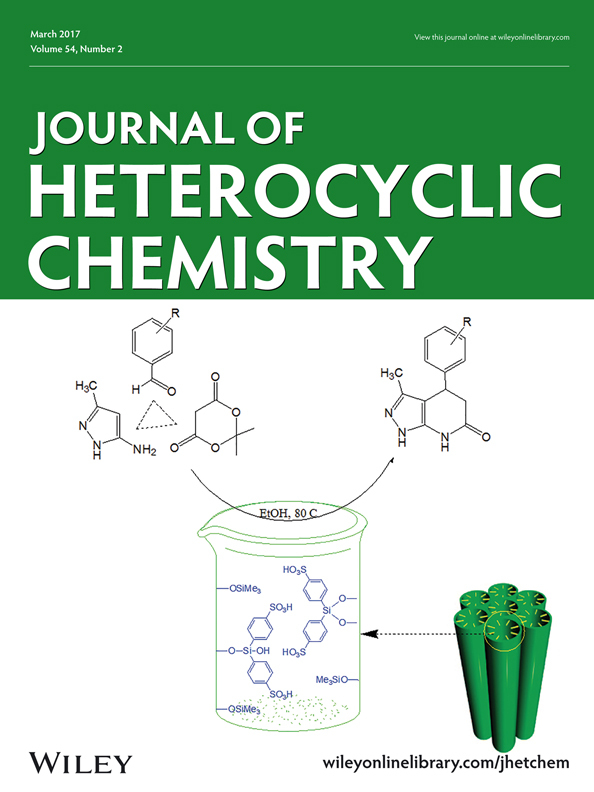Asymmetric Hydroformylation of 4-Vinyl-1,3-dioxolan-2-one
Abstract
A chiral cyclic carbonate, 4-vinyl-1,3-dioxolan-2-one was used as racemic substrate in asymmetric hydroformylation. The catalysts were formed in situ from “pre-formed” PtCl2(diphosphine) and tin(II) chloride. (2S,4S)-2,4-Bis(diphenylphosphinopentane ((S,S)-BDPP)), (S,S)-2,3-O-izopropylidine-2,3-dihydroxy-1,4-bis(diphenylphosphino)butane ((S,S)-DIOP)), and (R)-2,2′-bis(diphenylphosphino)-1,1′-binaphthyl ((R)-BINAP)) were used as optically active diphosphine ligands. The platinum-containing catalytic systems provided surprisingly high activity. The hydroformylation selectivities of up to 97% were accompanied by perfect regioselectivity towards the dioxolane-based linear aldehyde. The enantiomeric composition of all components in the reaction mixture was determined and followed throughout the reaction. The unreacted 4-vinyl-1,3-dioxolan-2-one was recovered in optically active form. The kinetic resolution was rationalized using the enantiomeric composition of the substrate and the products.




